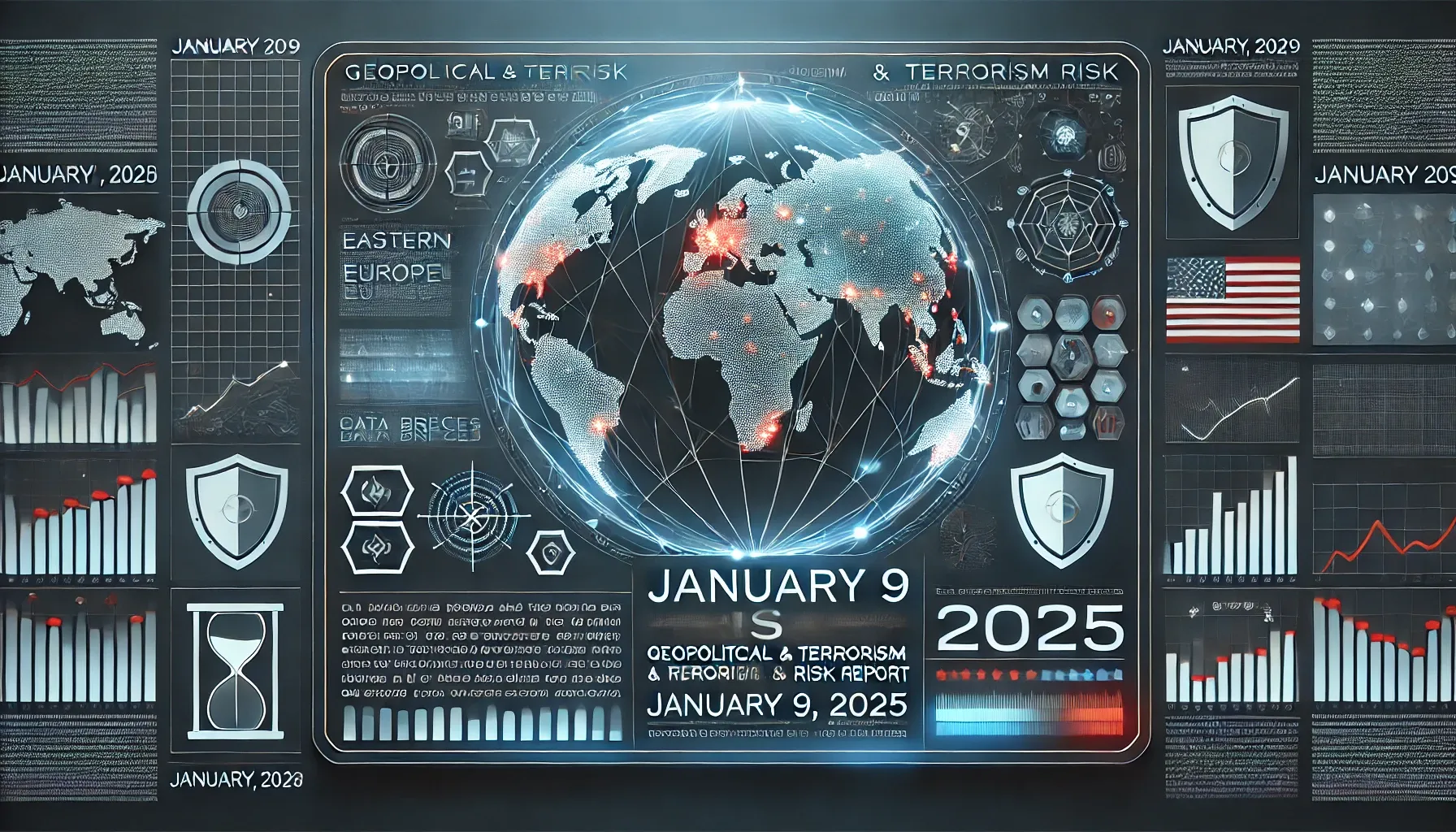Prime Rogue Daily Risk Report: January 9, 2025
Executive Summary
January 9, 2025, is marked by significant geopolitical developments and security concerns. The disintegration of Vladimir Putin’s regime in Russia signals a potential shift in global power dynamics, while recent terrorist attacks in the United States highlight evolving threats. Businesses are bracing for another year of geopolitical tumult, emphasizing the need for vigilance and strategic planning.
1. Geopolitical Developments
- Russia’s Political Instability:
- Analysts compare the current disintegration of Vladimir Putin’s regime to the collapse of the Soviet Union in 1989. Internal corruption and faltering alliances have weakened Moscow’s control, leading to regional instability and potential power vacuums.
- Global Business Climate:
- Businesses worldwide are preparing for continued geopolitical uncertainty, particularly concerning U.S.-China relations and rising protectionism. Executives identify geopolitical instability and trade policy changes as significant risks for the upcoming year.
2. Recent Terrorist Incidents
- New Orleans Attack:
- On January 1, 2025, Shamsud-Din Jabbar executed a terrorist attack in New Orleans, resulting in 14 fatalities. Jabbar utilized rare explosives, previously unseen in the U.S. or Europe, indicating possible high-level terror training and raising concerns about sophisticated threats.
- Las Vegas Bombing:
- A former U.S. Army Green Beret carried out an explosion in Las Vegas, contributing to a series of terror-related incidents in early 2025. Intelligence analysts had previously warned about the potential for such attacks, highlighting the evolving nature of domestic terrorism.
3. Predictive Analysis
Potential Targets:
- Political Institutions:
- Locations: Government buildings and embassies, particularly in regions experiencing instability.
- Rationale: The weakening of Putin’s regime may embolden separatist movements or external actors to target symbols of authority.
- Commercial Centers:
- Locations: Major business districts in global cities.
- Rationale: Geopolitical tensions and protectionist policies could lead to protests or targeted attacks on multinational corporations.
- Public Gatherings:
- Locations: Events attracting large crowds, such as concerts or sports events.
- Rationale: Recent attacks demonstrate a trend towards targeting densely populated areas to maximize impact.
Likely Attack Types:
- Cyberattacks:
- Targets: Critical infrastructure and financial institutions.
- Details: Increased geopolitical tensions may lead to state-sponsored or independent cyber operations aiming to disrupt services.
- Improvised Explosive Devices (IEDs):
- Targets: Public transportation and crowded venues.
- Details: The use of sophisticated explosives, as seen in recent attacks, indicates a potential rise in IED incidents.
- Assassinations:
- Targets: Political figures or activists.
- Details: Power vacuums and political instability may lead to targeted killings to influence political outcomes.
High-Risk Regions:
- Eastern Europe:
- Key Areas: Russia and neighboring countries.
- Risks: Political instability may lead to civil unrest and cross-border conflicts.
- United States:
- Key Cities: New Orleans, Las Vegas, and other major urban centers.
- Risks: Recent terrorist attacks suggest a heightened threat level, necessitating increased security measures.
- East Asia:
- Key Areas: China and surrounding regions.
- Risks: Trade tensions and geopolitical rivalries may result in economic disruptions and localized conflicts.
4. Implications for Stakeholders
- Businesses:
- Risk Management: Develop contingency plans to address potential disruptions from geopolitical instability and trade policy changes.
- Security Enhancements: Invest in cybersecurity and physical security measures to protect assets and personnel.
- Government Agencies:
- Intelligence Gathering: Monitor developments in Russia and other unstable regions to anticipate potential threats.
- Public Communication: Provide timely information and guidance to citizens regarding safety measures and travel advisories.
- General Public:
- Vigilance: Stay informed about local and international developments that may impact personal safety.
- Preparedness: Follow official advisories and participate in community preparedness initiatives.
Conclusion
The geopolitical landscape on January 9, 2025, is characterized by significant instability and emerging threats. Stakeholders must remain proactive in assessing risks and implementing measures to safeguard interests in an increasingly unpredictable environment.
This report is part of Prime Rogue‘s commitment to providing timely and insightful analysis on terrorism and geopolitical risks.
